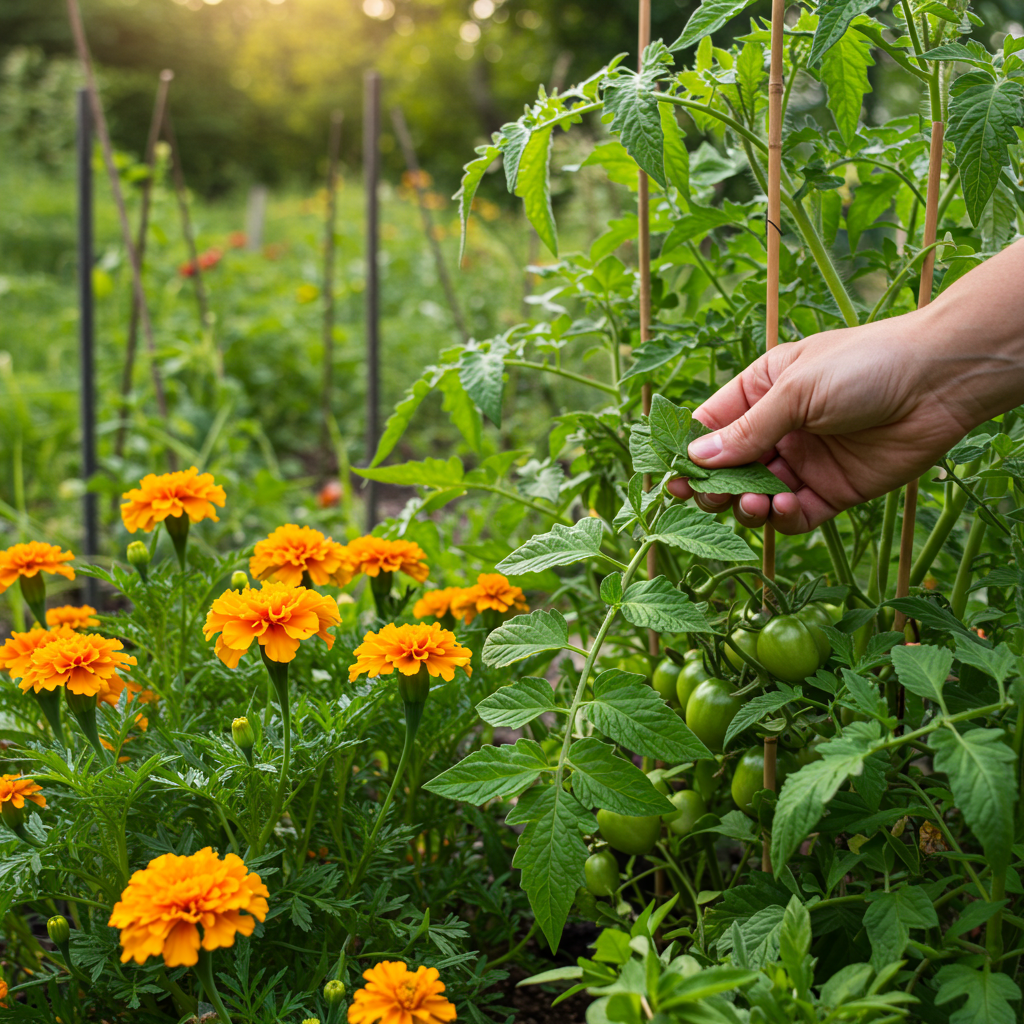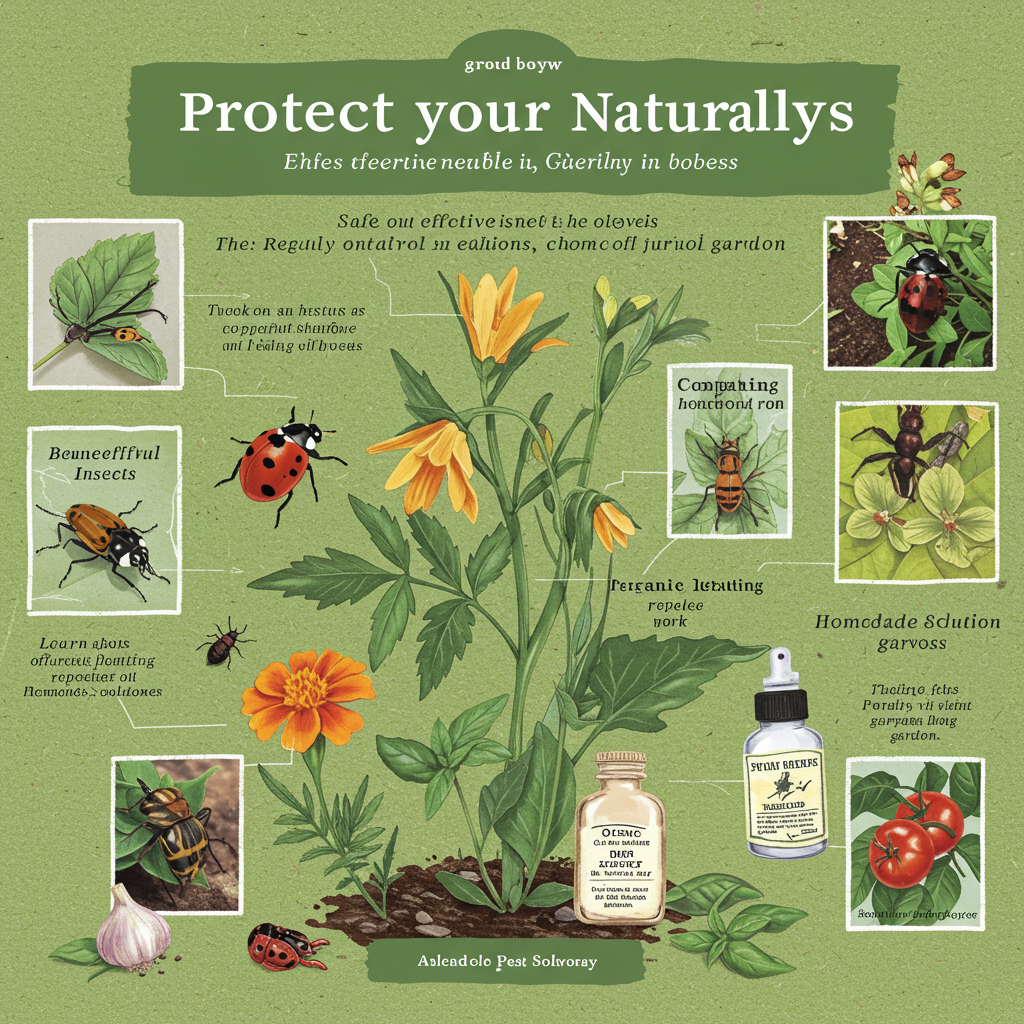Every gardener dreams of a lush, vibrant space, but often, tiny invaders threaten that vision. Pests can decimate crops and diminish the joy of gardening. While chemical solutions offer quick fixes, they come with a hefty price for your health, the environment, and beneficial garden dwellers. This ultimate guide will unveil the secrets to organic pest control, empowering you to cultivate a resilient, chemical-free garden using nature’s own methods.
Before you can conquer pests, you must know your enemy. Effective organic pest management begins with keen observation and accurate identification. Are those holes in your leaves from slugs or caterpillars? Is that yellowing caused by aphids or a nutrient deficiency?
- Common culprits include: Aphids, slugs, snails, squash bugs, tomato hornworms, Japanese beetles, spider mites, and cabbage worms.
- Look for signs like: Chewed leaves, stunted growth, sticky residue (honeydew), webbing, visible insects, or discolored foliage. Regular scouting – at least weekly – will help you catch infestations early when they’re easiest to manage organically.
Prevention is the cornerstone of organic pest control. A strong, healthy plant is its own best defense against pests.
- 1. Healthy Soil, Healthy Plants: Nutrient-rich, well-draining soil fosters robust plant growth. Incorporate compost and organic matter regularly to build soil health.
- 2. Smart Plant Selection: Choose disease and pest-resistant varieties. Opt for native plants that are naturally adapted to your local ecosystem and often less susceptible to regional pests.
- 3. Companion Planting: Certain plants repel pests or attract beneficial insects. For example, marigolds deter nematodes, while nasturtiums can act as a trap crop for aphids.
- 4. Crop Rotation: Avoid planting the same crop in the same spot year after year. This disrupts pest life cycles that overwinter in the soil and prevents the build-up of specific pest populations.
- 5. Garden Hygiene: Regularly remove weeds, which can harbor pests and compete for resources. Dispose of diseased or heavily infested plant material promptly, ideally away from the garden to prevent spread.

When prevention isn’t quite enough, mechanical methods offer direct, non-toxic intervention.
- Hand-picking: For larger pests like tomato hornworms or slugs, your hands (gloves recommended!) are your best tools. Drop them into soapy water.
- Row Covers & Nets: Lightweight, breathable fabric covers can physically exclude flying insects like cabbage moths and squash bugs from reaching susceptible plants. Ensure good air circulation.
- Traps: Yellow sticky traps can catch aphids, whiteflies, and fungus gnats. Beer traps are effective for slugs and snails. Pheromone traps can monitor or reduce specific insect populations.
- Pruning: Remove and destroy any visibly infested leaves, stems, or fruits immediately. This prevents the spread and reduces the overall pest load.
- Water Sprays: A strong jet of water from your hose can dislodge aphids, spider mites, and other soft-bodied pests from plants. Repeat as needed.
Harnessing nature’s own pest management system is one of the most elegant and sustainable organic strategies.
- Beneficial Insects: Introduce or encourage natural predators and parasites. Ladybugs feast on aphids, lacewings consume a variety of soft-bodied insects, and parasitic wasps lay eggs in pest larvae.
- Attracting Beneficals: Plant a diverse array of flowers that provide nectar and pollen for beneficial insects. Dill, cilantro, cosmos, and sweet alyssum are excellent choices.
- Birds and Other Wildlife: Encourage insect-eating birds by providing water sources and safe nesting sites. Frogs, toads, and garter snakes are also excellent garden allies, consuming slugs, snails, and various insects.

While prevention and biological controls are preferred, sometimes a little extra help is needed. These organic sprays should be used as a last resort and applied judiciously.
- Neem Oil: Derived from the neem tree, this acts as an antifeedant, growth disruptor, and repellent for a wide range of pests. Apply according to package directions, often in the evening to avoid harming beneficials.
- Insecticidal Soap: Effective against soft-bodied insects like aphids, whiteflies, and spider mites. It works by disrupting their cell membranes. Ensure thorough coverage and test on a small area first.
- Diatomaceous Earth (DE): This finely ground fossilized algae is a natural abrasive. When pests with exoskeletons crawl over it, DE causes dehydration and death. Apply when dry; reapply after rain.
- DIY Sprays (Use with Caution): Garlic, chili, or essential oil sprays can have repellent properties. Always research and test homemade concoctions carefully, as some can harm plants or beneficial insects.
The most effective organic pest control isn’t a single solution but an integrated approach. IPM emphasizes observation, prevention, and the use of multiple control methods in a thoughtful sequence.
- Monitor: Regularly inspect your garden to identify pests and gauge population levels.
- Identify: Know what pests you’re dealing with to choose the right strategy.
- Thresholds: Understand when a pest population is truly causing damage that warrants intervention, rather than reacting to every single bug.
- Action: Start with the least toxic methods first (prevention, hand-picking) and escalate only if necessary (biological, then organic sprays).
Embarking on the journey of organic pest control is a commitment to a healthier garden and a healthier planet. It may require patience and observation, but the rewards are immeasurable: a vibrant, flourishing ecosystem, a bounty of chemical-free produce, and the satisfaction of working in harmony with nature. By implementing these strategies, you’re not just eliminating pests; you’re cultivating resilience, biodiversity, and true sustainability in your garden. Happy gardening!
